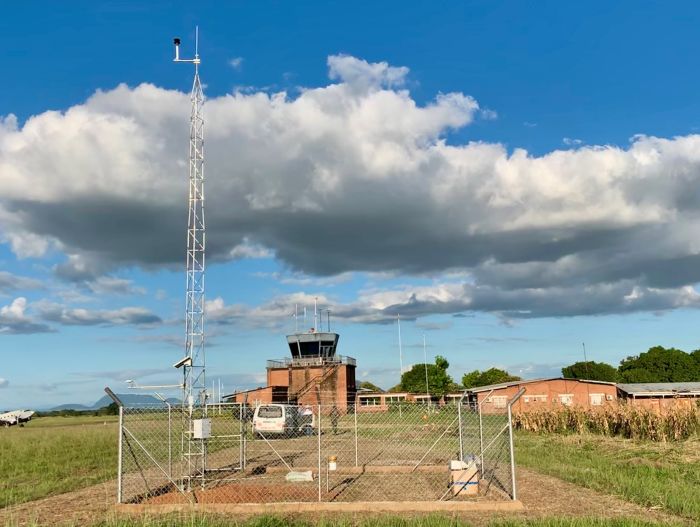



In 2019, Campbell Scientific embarked on a significant project with the Malawi Department of Climate Change and Meteorological Services, supported through a United Nations Development Programme (UNDP) tender. This initiative aimed to establish a robust Global Basic Observing Network (GBON)-ready system of 37 automatic weather stations (AWS) and sensors across Malawi. The primary objective was threefold: to enhance the country's weather observation capabilities, to ensure high availability of the data, and to reliably transmit network data to the World Meteorological Organization (WMO) Global Telecommunication System (GTS) and the WMO Information System (WIS) 2.0 for use in numerical weather prediction (NWP) models.
Meeting the Requirements
The project’s data transmission component required the hourly transmission of surface synoptic observations (SYNOP) messages via GTS. During the project implementation and through interaction with the WMO, the requirements were changed to send Binary Universal Form for the Representation of meteorological data (BUFR) messages to the WMO’s new WIS 2.0 environment.
The flexibility of Campbell Scientific’s CR310 Measurement and Control Dataloggers allowed for dataset transmissions via FTP to a WIS 2.0 node available to all WMO member countries.
Recent enhancements to the CR310 operating system (OS) will allow the transition from FTP to MQTT as prescribed in the WMO’s GBON Requirements Specification (TT-GBON Deliverable 6.1: GBON Tender Specifications for AWSs V1.1).
A complete set of data (hourly and daily tables) is also downloaded to an SQL database on a central server at Malawi's Department of Climate Change and Meteorological Services using LoggerNet and LoggerNet database software.
Campbell Scientific credits the WMO’s WIS 2.0 technical team, who provided guidance and support to establish a pilot project for direct data transmission from an AWS to WIS 2.0. The partnership resulted in a GBON-ready network that enabled dual data transmission to National Meteorological and Hydrological Service (NMHS) servers and directly to a WMO WIS 2.0 node.
The Malawi trial was successfully extended, leading to further testing with Zambia Meteorological Services using the MQTT protocol (with CR1000X Measurement and Control Dataloggers) for direct data transmissions to a WIS 2.0 node. Read about the installation of 120 AWS in Zambia in our Zambia: Strengthening Climate Resilience case study.
Collaboration and Expansion
The collaboration between Campbell Scientific and the WMO did not go unnoticed. Dimitar Ivanov, Director of Public-Private Partnerships for the WMO, recognized the potential of this partnership. In fact, this collaboration was highlighted as a model example for future projects, demonstrating the power of such alliances in solving real-world problems.
Broader Impact
The success of this project has far-reaching implications, and there are many other African countries that could benefit from similar solutions. This project underscored the importance of solving client problems, a cornerstone of Campbell Scientific’s mission.
This project exemplifies how Campbell Scientific’s solutions can address critical challenges in weather observation and data transmission applications, especially in regions with infrastructural limitations.
Conclusion
The 2019 UNDP project for the Malawi Department of Climate Change and Meteorological Services stands as a testament to the power of public-private partnerships in addressing critical environmental challenges. Campbell Scientific’s innovative solutions and collaborative approach have not only enhanced weather observation capabilities in Malawi but also set a precedent for similar initiatives across Africa and beyond. The project highlights the importance of teamwork, innovation, and a client-focused approach to drive impactful change.
Learn more about Campbell Scientific's WMO-compliant GBON monitoring systems on our GBON-Compliant Observation Solutions page.
Resumen de casos de estudio
Aplicaciones
GBON-ready system with 37 automatic weather stations and sensorsUbicación
Malawi, AfricaProductos utilizados
CR310 LoggerNetOrganizaciones participantes
Campbell Scientific Africa (Pty) LtdParámetros medidos
Air temperature, relative humidity, wind speed and direction, solar radiation, soil moisture, evaporationView the PDF